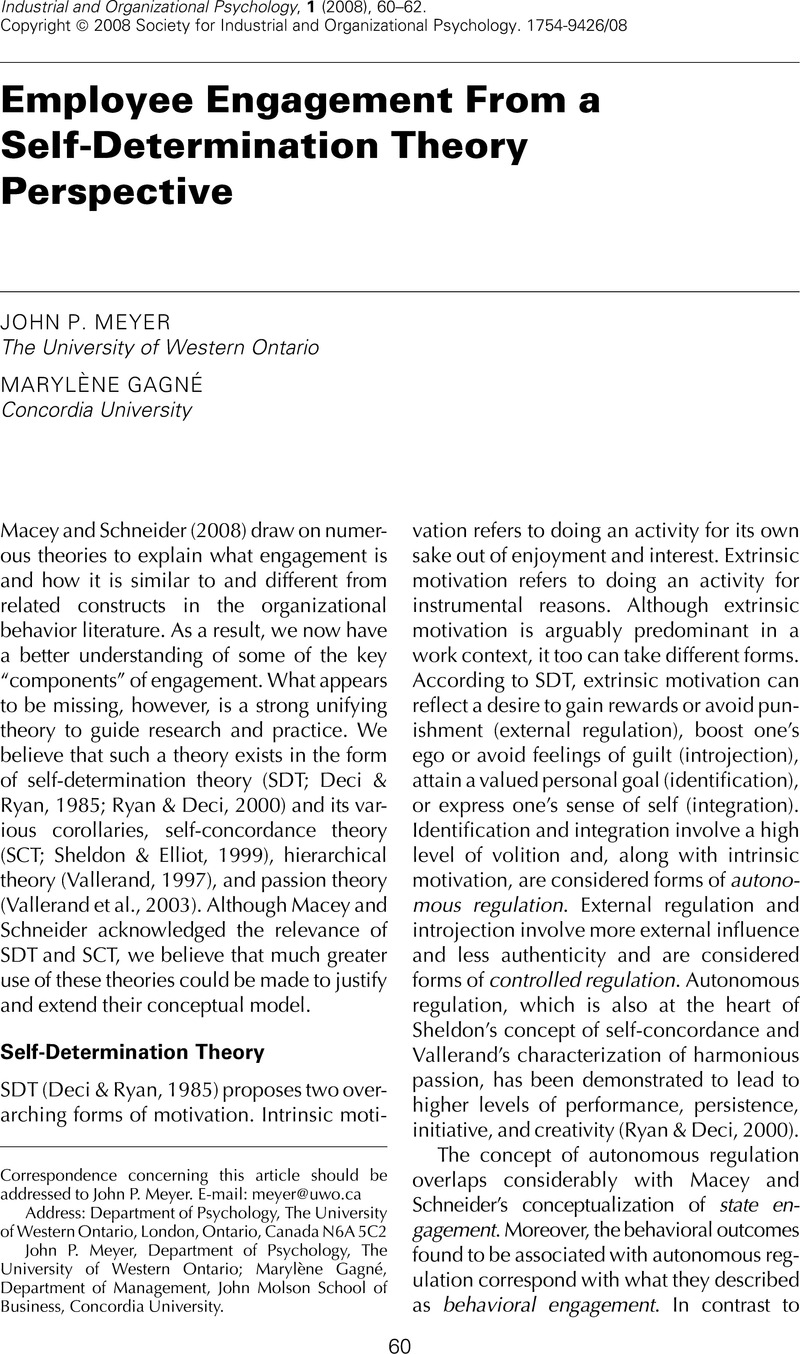Crossref Citations
This article has been cited by the following publications. This list is generated based on data provided by Crossref.
Macey, William H.
and
Schneider, Benjamin
2008.
Engaged in Engagement: We Are Delighted We Did It.
Industrial and Organizational Psychology,
Vol. 1,
Issue. 1,
p.
76.
Schielke, Hugo Josef
Fishman, Jonathan Louis
Osatuke, Katerine
and
Stiles, William B.
2009.
Creative consensus on interpretations of qualitative data: The Ward method.
Psychotherapy Research,
Vol. 19,
Issue. 4-5,
p.
558.
Zigarmi, Drea
Nimon, Kim
Houson, Dobie
Witt, David
and
Diehl, Jim
2009.
Beyond Engagement:Toward a Framework and Operational Definition for Employee Work Passion.
Human Resource Development Review,
Vol. 8,
Issue. 3,
p.
300.
Marescaux, Elise
De Winne, Sophie
and
Sels, Luc
2010.
HRM Practices and Work Outcomes: The Role of Basic Need Satisfaction.
SSRN Electronic Journal,
Gagné, Marylène
Forest, Jacques
Gilbert, Marie-Hélène
Aubé, Caroline
Morin, Estelle
and
Malorni, Angela
2010.
The Motivation at Work Scale: Validation Evidence in Two Languages.
Educational and Psychological Measurement,
Vol. 70,
Issue. 4,
p.
628.
Gillet, Nicolas
Berjot, Sophie
and
Paty, E.
2010.
Profils motivationnels et ajustement au travail : vers une approche intra-individuelle de la motivation.
Le travail humain,
Vol. Vol. 73,
Issue. 2,
p.
141.
Parker, Stacey L.
Jimmieson, Nerina L.
and
Amiot, Catherine E.
2010.
Self-determination as a moderator of demands and control: Implications for employee strain and engagement.
Journal of Vocational Behavior,
Vol. 76,
Issue. 1,
p.
52.
Forest, Jacques
and
Gagne, Marylene
2011.
The Study of Compensation Systems Through the Lens of Self-Determination Theory: Reconciling 35 Years of Debate.
SSRN Electronic Journal,
Gagné, Marylène
and
Bhave, Devasheesh
2011.
Human Autonomy in Cross-Cultural Context.
Vol. 1,
Issue. ,
p.
163.
Leroy, Hannes
Palanski, Michael E.
and
Simons, Tony
2012.
Authentic Leadership and Behavioral Integrity as Drivers of Follower Commitment and Performance.
Journal of Business Ethics,
Vol. 107,
Issue. 3,
p.
255.
Klassen, Robert M.
Aldhafri, Said
Mansfield, Caroline F.
Purwanto, Edy
Siu, Angela F. Y.
Wong, Marina W.
and
Woods-McConney, Amanda
2012.
Teachers’ Engagement at Work: An International Validation Study.
The Journal of Experimental Education,
Vol. 80,
Issue. 4,
p.
317.
Ferreira, Marisa R.
Proença, Teresa
and
Proença, João F.
2012.
Motivation among hospital volunteers: an empirical analysis in Portugal.
International Review on Public and Nonprofit Marketing,
Vol. 9,
Issue. 2,
p.
137.
Soane, Emma
Truss, Catherine
Alfes, Kerstin
Shantz, Amanda
Rees, Chris
and
Gatenby, Mark
2012.
Development and application of a new measure of employee engagement: the ISA Engagement Scale.
Human Resource Development International,
Vol. 15,
Issue. 5,
p.
529.
VOLPONE, SABRINA D.
AVERY, DEREK R.
and
McKAY, PATRICK F.
2012.
Linkages Between Racioethnicity, Appraisal Reactions, and Employee Engagement.
Journal of Applied Social Psychology,
Vol. 42,
Issue. 1,
p.
252.
Bhuasiri, Wannasiri
Xaymoungkhoun, Oudone
Zo, Hangjung
Rho, Jae Jeung
and
Ciganek, Andrew P.
2012.
Critical success factors for e-learning in developing countries: A comparative analysis between ICT experts and faculty.
Computers & Education,
Vol. 58,
Issue. 2,
p.
843.
황혜원
and
Kim Bong-Whan
2013.
The Validity of a Situational Motivation Scale Based on Self-Determination Theory Regarding Work.
Korea Journal of Counseling,
Vol. 14,
Issue. 5,
p.
2891.
Chughtai, Aamir Ali
and
Buckley, Finian
2013.
Exploring the impact of trust on research scientists' work engagement.
Personnel Review,
Vol. 42,
Issue. 4,
p.
396.
Vogelgesang, Gretchen R.
Leroy, Hannes
and
Avolio, Bruce J.
2013.
The mediating effects of leader integrity with transparency in communication and work engagement/performance.
The Leadership Quarterly,
Vol. 24,
Issue. 3,
p.
405.
Shuck, Brad
Ghosh, Rajashi
Zigarmi, Drea
and
Nimon, Kim
2013.
The Jingle Jangle of Employee Engagement.
Human Resource Development Review,
Vol. 12,
Issue. 1,
p.
11.
Gagné, Marylène
and
Vansteenkiste, Maarten
2013.
Advances in Positive Organizational Psychology.
Vol. 1,
Issue. ,
p.
61.



